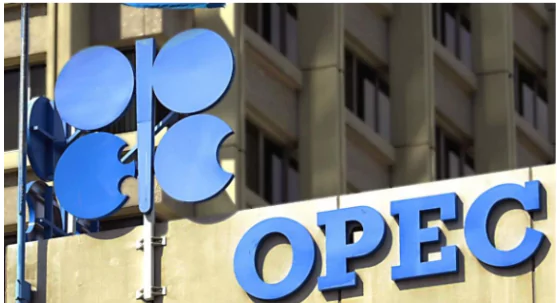OPEC+ influences global oil markets through production policies. OPEC+ decisions affect crude prices, supply chains, and economic stability, impacting both producers and consumers.

OPEC+: The Organization of the Petroleum Exporting Countries (OPEC) is a major intergovernmental organization responsible for coordinating global oil production policies. Since its establishment in 1960, OPEC has played a crucial role in managing oil prices and production levels. However, in 2016, the organization expanded its influence by forming OPEC+, an alliance with 10 additional non-OPEC oil-producing countries.
This detailed analysis of OPEC+ covers its objectives, member countries, and differences from OPEC.
OPEC, short for the Organization of the Petroleum Exporting Countries, was established in 1960 by Iraq, Iran, Kuwait, Saudi Arabia, and Venezuela. The headquarters of OPEC is in Vienna, Austria.

OPEC+ is an extension of OPEC that includes additional oil-producing countries outside the organization. It was formed in 2016 in response to a sharp decline in oil prices due to the rising production of U.S. shale oil. The primary goal of OPEC+ is to coordinate oil production and maintain market stability.
OPEC+ is an alliance between the Organization of the Petroleum Exporting Countries (OPEC) and 10 additional non-OPEC oil-producing nations. It was formed in 2016 to stabilize global oil markets by coordinating production levels.
| OPEC+ Overview | |
| Aspect | Details |
| Full Form | Organization of the Petroleum Exporting Countries Plus |
| Established | 2016 |
| Headquarters | Vienna, Austria (same as OPEC) |
| Total Members | 23 (13 OPEC members + 10 non-OPEC allies) |
| OPEC Members | Algeria, Angola, Congo, Equatorial Guinea, Gabon, Iran, Iraq, Kuwait, Libya, Nigeria, Saudi Arabia, UAE, Venezuela |
| Non-OPEC Members | Azerbaijan, Bahrain, Brunei, Kazakhstan, Malaysia, Mexico, Oman, Russia, South Sudan, Sudan |
| Key Objective | Coordinate oil production policies to stabilize global oil prices |
| Major Producers | Saudi Arabia, Russia, UAE, Iraq, Kuwait |
| Market Influence | Controls nearly 40% of global oil production |
| Recent Production Cuts | 3.66 million barrels per day (as of 2023) |
| India’s Role | Not a member, but a major oil importer from OPEC+ countries |
The Organization of the Petroleum Exporting Countries (OPEC) was established at the Baghdad Conference on September 10–14, 1960, by Iran, Iraq, Kuwait, Saudi Arabia, and Venezuela. Over the years, OPEC expanded to include multiple other nations, navigating various global economic and political challenges. The organization moved its headquarters from Geneva, Switzerland, to Vienna, Austria, on September 1, 1965.
In December 2016, the Declaration of Cooperation was signed, forming OPEC+, which included non-OPEC oil-producing countries aiming to balance oil markets. Below is a timeline summarizing key events in OPEC’s history.
| OPEC+ Timeline | |
| Year | Event |
| 1960 | OPEC was founded by Iran, Iraq, Kuwait, Saudi Arabia, and Venezuela. |
| 1961 | Qatar joined OPEC. |
| 1962 | Indonesia and Libya joined OPEC. |
| 1965 | OPEC moved its headquarters from Geneva, Switzerland, to Vienna, Austria. |
| 1967 | United Arab Emirates joined OPEC. |
| 1969 | Algeria became an OPEC member. |
| 1971 | Nigeria joined OPEC. |
| 1973 | Ecuador joined OPEC. |
| 1975 | Gabon became a member; OPEC established the OPEC Fund for International Development. |
| 1976 | OPEC introduced pricing policies and market stabilization strategies. |
| 1986 | Oil prices crashed due to an oil glut; OPEC adjusted production to stabilize the market. |
| 1992 | Ecuador suspended its OPEC membership. |
| 1995 | Gabon withdrew from OPEC. |
| 2000 | OPEC held its second summit in Caracas, focusing on stable energy markets. |
| 2007 | Angola joined OPEC; OPEC held its third summit in Riyadh. |
| 2008 | The global financial crisis led to OPEC production cuts. |
| 2016 | Indonesia suspended its membership; Gabon rejoined OPEC; OPEC+ was formed with the Declaration of Cooperation. |
| 2019 | Ecuador withdrew from OPEC. |
| 2020 | The COVID-19 pandemic caused a sharp decline in oil demand; OPEC+ implemented historic production cuts. |
| 2024 | Angola withdrew from OPEC. |
OPEC+ consists of a mix of OPEC members and other oil-producing countries. Understanding its composition is essential for analyzing its influence on the oil market. This section provides a detailed list of OPEC+ members. As of 2024, OPEC+ consists of 23 countries:
Currently, OPEC has 13 member countries:
OPEC+ includes 10 additional countries that are major oil producers but not part of OPEC:
These nations collaborate with OPEC to regulate oil production, ensuring price stability.
OPEC (Organization of the Petroleum Exporting Countries) and OPEC+ are alliances that influence global oil production and pricing. OPEC, formed in 1960, consists of 13 oil-producing nations that coordinate production policies to stabilize oil prices. In 2016, OPEC+ was established by including 10 additional non-OPEC countries, notably Russia, to extend control over global oil supply. While OPEC focuses on internal production quotas, OPEC+ allows broader cooperation in managing market fluctuations.
| OPEC Vs. OPEC+ | ||
| Feature | OPEC | OPEC+ |
| Main Purpose | Control oil supply & stabilize prices | Additional control over oil production by including non-OPEC members |
| Key Influence | Sets oil production quotas | Extends control over global oil supply |
| Formation | Established in 1960 in Baghdad by Iraq, Iran, Kuwait, Saudi Arabia, and Venezuela. | Created in 2016 as an alliance between OPEC and 10 non-OPEC oil-producing nations. |
| Objective | To coordinate and unify petroleum policies among member countries to stabilize global oil prices. | To enhance cooperation between OPEC and non-OPEC oil producers for better global oil market management. |
| Members | 13 member countries: Algeria, Angola (until 2024), Congo, Equatorial Guinea, Gabon, Iran, Iraq, Kuwait, Libya, Nigeria, Saudi Arabia, UAE, and Venezuela. | OPEC’s 13 members + 10 non-OPEC countries: Azerbaijan, Bahrain, Brunei, Kazakhstan, Malaysia, Mexico, Oman, Russia, South Sudan, and Sudan. |
| Leadership | Dominated by Saudi Arabia, the world’s second-largest oil producer in 2022. | Led by Saudi Arabia and Russia, the world’s second and third-largest oil producers in 2022. |
| Oil Market Share | Produces about 30-40% of the world’s crude oil and holds around 80% of global proven oil reserves. | Produces around 40-50% of the world’s crude oil, making it a larger force in price regulation. |
| Influence on Prices | Adjusts production levels to stabilize global oil prices, responding to economic shifts and demand fluctuations. | Works collectively with non-OPEC members to influence oil prices through coordinated production policies. |
| Response to Market Changes | Reduces or increases production based on supply-demand dynamics. | Implements broader and more significant production cuts or increases due to the involvement of non-OPEC producers. |
| Headquarters | Vienna, Austria | No separate headquarters; follows OPEC’s policies with additional cooperation. |
OPEC+ plays a significant role in global oil pricing through coordinated production cuts and increases.
OPEC+ countries meet regularly to adjust production quotas based on global supply and demand. By reducing or increasing output, OPEC+ directly affects global crude oil prices.
In April 2023, OPEC+ members agreed to cut oil production by 1.2 million barrels per day (b/d) to stabilize oil prices. This was in addition to previous cuts, making total reductions 3.66 million b/d below August 2022 production levels.
Despite sanctions against Russia following the Ukraine conflict, Russia remains a key player in OPEC+. Its production levels, exceeding 10 million b/d, significantly impact oil markets.
Despite these measures, factors like rising U.S. oil production and global economic slowdowns have influenced market trends.
India is one of the largest consumers of crude oil. Its relationship with OPEC+ significantly affects its energy costs. This section explains India’s role in the oil market and its dependence on OPEC+.
No, India is not a member of OPEC or OPEC+. However, India is one of the largest oil importers in the world, heavily dependent on OPEC+ countries for its crude oil supply.
India’s energy security is closely tied to OPEC+ decisions, as changes in production quotas directly affect fuel prices in the country.
India imports around 85% of its crude oil, with OPEC+ nations supplying a majority of this demand. In 2024, OPEC’s share in India’s crude oil imports increased for the first time in nine years to 51.5%, as Russia’s share declined due to new sanctions. India imported 4.84 million barrels per day, with a higher demand for Middle Eastern oil.
Key suppliers include:
Due to its heavy dependence on OPEC+ oil, India’s economy is significantly affected by fluctuations in OPEC+ policies and geopolitical changes impacting major suppliers.
OPEC+ plays a critical role in managing global oil supply, but it faces increasing pressure from market fluctuations, geopolitical tensions, and the global energy transition. As nations prioritize energy security and sustainability, OPEC+ must adapt to maintain its influence in the evolving landscape. The organization’s ability to navigate these challenges will determine its long-term role in global markets.
Despite challenges, OPEC+ remains a dominant force in global energy markets. However, its influence may decline as:
Understanding What is OPEC+ is crucial for analyzing global energy markets. OPEC+ plays a dominant role in controlling oil supply and influencing prices, with Russia and Saudi Arabia as key members.
The organization will continue to shape oil markets, even as renewable energy sources gain prominence. However, global demand for oil remains high, ensuring OPEC+ remains influential in the coming years.
Ready to boost your UPSC 2025 preparation? Join PW’s UPSC online courses today!
OPEC+ is an alliance of OPEC and non-OPEC oil-producing nations that coordinate oil production policies.
OPEC+ was formed to stabilize global oil prices by managing supply through coordinated production cuts or increases.
OPEC+ controls oil supply, which affects global prices by adjusting production levels to balance market demand.
OPEC+ includes OPEC members like Saudi Arabia and non-OPEC nations like Russia, coordinating oil production strategies.
OPEC+ policies influence fuel prices, impacting transportation costs and inflation across economies.
OPEC+ decisions influence fuel costs, inflation, and economic growth worldwide by regulating oil supply.
<div class="new-fform">
</div>
